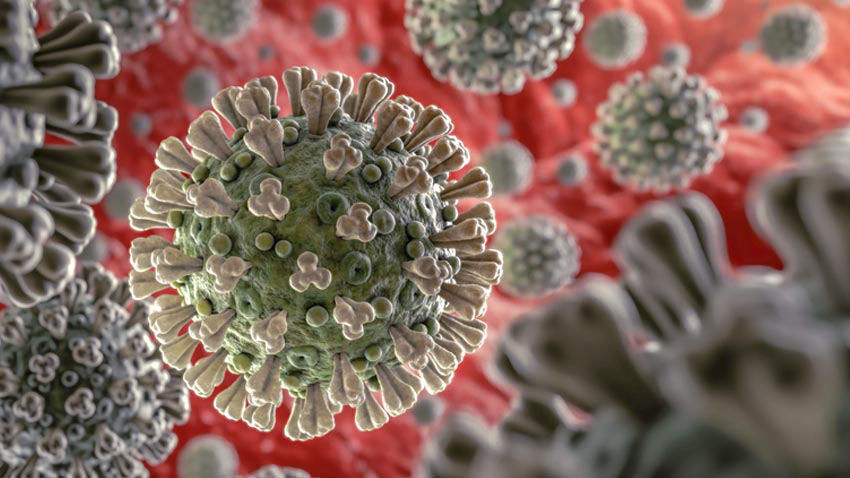State adds nearly 900 new COVID-19 cases, 26 deaths Friday
Published 2:56 pm Friday, October 2, 2020

- Christmasy COVID
Friday’s Louisiana Department of Health COVID-19 data showed the state with 889 new confirmed COVID-19 cases, 167,401 identified infections so far, an increase of 0.53 percent from Thursday’s total of 166,584.
The state added 22,704 new test results Friday, making the rough positivity rate for those reported infections 3.9 percent.
The state’s seven-day average of tests given as of Sept. 25, the last date reported, was 28.07 tests per 10,000 residents. The positivity rate among those tests was 4.46 percent.
In Region 4, the Sept. 25 testing rate was below the state average, at 25.92 tests per 10,000 residents. The seven-day average percent positive of those tests as of Sept. 25 was slightly above the state average, at 4.66 percent.
According to the Friday update, the number of deaths attributed to COVID-19 rose to 5,355, up from 5,329 on Wednesday. That rise represents an increase of 26, or a 0.49 percent change. The average age of fatal patients is 75, the median age 76. As of Sept. 23, 190 of those deaths were still considered probable COVID-19 fatalities pending final testing. The number of probable deaths attributed to COVID-19 is updated each week on Wednesday.
In Iberia Parish, the number of cases rose to 2,971 Friday, an increase of 29. The number of deaths remained at 89, with 32,739 tests performed in the parish. The LDH latest two-week incidence map update showed that the parish’s positive test rate dropped 28.46 percent, from 118.41 cases reported per 100,000 population on Sept. 9 to 107.13 per 100,000 on Sept. 23.
St. Martin Parish’s number of identified cases was at 2,102, a decrease of one, with 28,811 tests performed. The LDH two-week incidence map shows that on Sept. 23, St. Martin Parish had 61.54 cases reported per 100,000 population, a 47.6 percent drop from 117.49 per 100,000 in the last update. The number of deaths remained at 61.
In St. Mary Parish, the total cases remained at 1,947 after 19,866 tests. The number of COVID-19 deaths remained at 77. The LDH incidence map shows that on Sept. 23 the parish had 162.74 cases reported per 100,000 population, up 30.7 percent from 124.56 on Sept. 9.
In Lafayette Parish, the Thursday case count rose by 39, to 9,050, with the number of tests rising to 139,792. The number of deaths rose by one, to 133. The LDH incidence map shows that the parish had 119.86 cases reported per 100,000 population on Sept. 23, down 12.9 percent from 137.57 on Sept. 9.
The number of cases in Jefferson Parish rose by 10 to 17,683 on Friday, compared to an increase of 38, to 12,738, in Orleans Parish. The latest data shows Orleans administered more tests, with 215,228 tests in Jefferson compared to 246,096 in Orleans.
Despite lower case numbers, the more urban Orleans Parish has seen 18 more deaths than its suburban neighbor. Orleans Parish deaths rose by one, to 588. In Jefferson Parish, the total number of deaths remained at 570. The LDH two-week incidence map shows that on Sept. 23, Jefferson Parish had 108.28 cases reported per 100,000 population, down from 141.92 on Sept. 9. In Orleans, that number was 99.49 per 100,000, down from 173.65.
The LDH reporting of data on hospitalizations due to the disease is still running 24 hours behind. On Thursday, the state reported 536 hospitalizations as of Thursday, an increase of two from 534 on Wednesday. The number of patients on ventilators dropped by one, to 74 Thursday. That is down from 75 on Wednesday.
The number of COVID-19 hospitalizations in Region 4, which covers Acadiana, rose by two, to 45 on Thursday. The number of patients on ventilators Thursday rose by one, to five.
The overall intensive care bed occupancy rate in Region 4 rose Thursday — from 80.25 percent to 83.9 percent, with 135 beds occupied and 26 ICU beds still available. The total number of ICU beds dropped by one, to 161. That is still down from the count of active ICU beds before Hurricane Laura, which hovered above 180.
Wednesday’s data also showed that hospital bed occupancy was down slightly in Region 4, with 1,200 — 76.5 percent — of the region’s beds occupied and 368 available. The total number of reported beds decreased by six, to 1,568.
Among K-12 schools, the state is currently reporting 523 cases, 262 among staff and faculty and 261 among students. On the higher education level, the state reports 2,675 cases among students living or attending classes on campus, 117 cases among students in virtual learning only since the beginning of the fall semester, 211 cases among staff and faculty working on campus and 25 among faculty and staff working virtually.
In its congregate setting tracking, LDH is showing 3,039 cases in 370 separate outbreaks. Almost a fourth of those, 813, are in 31 outbreaks at food processing facilities, with another 428 in 59 outbreaks at other industrial sites.
The state is currently showing 477 cases identified in bars, in 42 outbreaks.
When compared by age group, the number of cases in the 18 to 29 demographic was at 37,372 Thursday. It is the demographic group with the largest number of identified cases by far. The number of deaths reported in the group remained at 24.
The number of COVID-19 cases identified in the 30 to 39 age group was at 26,996, with 83 deaths, followed closely by the 40 to 49 age group, with 24,724 cases and 174 deaths, and the 50 to 59 age range with 24,219 cases, including 461 fatalities reported.
The 70 and above group case count was at 19,313. The number of deaths in that group rose by 15, to 3,640 — still the largest number of fatalities for any age group by far, more than the number of deaths in all other groups combined and more than two-thirds of the total COVID-19 attributed deaths in the state.
In the 60 to 69 age group, there were 18,960 cases reported and 969 deaths. This age group has the second-highest number of deaths, behind only the 70 and above demographic group.
The under 18 group, the smallest demographic segment, had 15,611 cases total and four reported deaths.
According to Friday’s update, labs in Louisiana have processed at least 2,356,024 COVID-19 tests so far.
The state has also started tracking possible cases, which is the number of individuals with a positive test detecting SARS-CoV-2 antigens. That number was 1,425 as of Sept. 30. According to an LDH spokesman, individuals initially identified as having a positive antigen test who are later identified as having a positive confirmatory test will be removed from the probable case count and added to the cumulative case count.
By gender, the state’s daily report shows women making up the largest part — 56 percent — of the identified COVID-19 cases in the state, with men comprising 44 percent. On the other hand, the COVID-19 deaths are predominantly among men, 52.1 percent to 47.9 percent for women.
The number of presumed recovered cases, as of Sept. 28, rose to 154,163. In order to be considered recovered, a living patient must either be out of the hospital and 14 days past a positive test result, or 21 days past a positive test date if their hospitalization status is unknown.
On Sept. 30, the weekly update of fatalities by race showed the percentage of COVID-19 deaths among White victims climbed four-tenth of a percent, while the percentage of Black fatalities continued to drop.
Initially, LDH reported that 70 percent of all COVID-19 deaths in the state were in the Black community. That number has since dropped to 45.86 percent as of Sept. 30, while White victims now make up 52.63 percent of all fatal cases.
The Native American/Alaskan Native rose to 0.09 percent. Native Hawaiian/Pacific Islander data remained at 0.08 percent. Other races identified include Asian at 0.68 percent and Other at 0.58 percent. Unknown accounted for 0.02 percent.
The number of Black deaths is still disproportionate to the demographics of the state’s population. African Americans make up less than 40 percent of Louisiana’s populace.
That data is only reported once a week, updated on Wednesday.
The top three underlying conditions among COVID-19 deaths in the latest report were hypertension (52.54 percent), diabetes (31.32 percent), and cardiac disease (20.52 percent).
Other factors included neurological disorders (19.53 percent), chronic kidney disease (18.3 percent), obesity (16.87 percent), congestive heart failure (13.43 percent), pulmonary issues (11.38 percent), cancer (6.66 percent), and asthma (3.4 percent).




